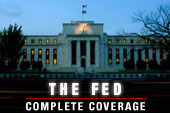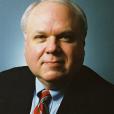
In Samuel Beckett’s famous play, “Waiting for Godot,” two men wait endlessly for a man named Godot to arrive, but he never does. Today, economic policy is paralyzed by the expectation of inflation that never arrives and never will unless policy changes. Unfortunately, that means that growth will not arrive, either.
It’s an old joke that generals and admirals are always fighting the last war. Right now, for example, much of our military is geared toward fighting the Soviet Union, a nation that ceased to exist more than 20 years ago. And to protect jobs and weapons systems with no other use than to fight a nuclear war with a nation as powerful, militarily, as we are, minor threats from countries such as Iran are continually hyped into Soviet-level dangers.
The same is true in economics as well. For decades after the end of the Great Depression, much of our economic policy was geared toward preventing its recurrence. Indeed, there were a considerable number of reputable economists who thought the depression was a permanent condition that would start up right where it left off once World War II ended.
Moreover, because the Great Depression was characterized by deflation—a falling price level—people came to see that inflation can sometimes be a good thing — grease that lubricated the economy’s gears.
Inflation meant that businesses could raise prices from time to time and make profits, and that home prices would rise and provide equity for homeowners. Unemployment and layoffs could be prevented by lowering real wages, which happened when they simply didn’t increase as much as the inflation rate. Thus economic adjustment was facilitated.
However, these beneficial effects of inflation become toxic once the inflation rate rose above a certain level and became embedded in expectations. For example, unions begin demanding wage increases that exceed the expected inflation rate. This forced businesses to raise their prices more than they would have liked to stay ahead, thus creating an upward price spiral.
Another problem created by inflation was that workers got pushed up into higher tax brackets. The average federal income tax rate on a 4-person family with the median income rose from 9.1 percent in 1972 to 11.7 percent by 1981 as a consequence. And the marginal tax rate—the tax on each additional dollar earned—rose from 19 percent to 23.7 percent over that same period, according to Treasury data.
Investors were also punished by being forced to pay capital gains taxes as high as 40 percent on fictitious gains that only represented inflation. Indeed, investors often paid taxes even when they suffered real losses.
The experience of the 1970s influenced policymakers for decades after the back of inflation was broken in the 1980s, when inflation fell from 12.1 percent in 1980 to just 1.1 percent in 1986. Although it edged up to 6.1 percent by 1990, inflation has generally been in the 2 percent to 3 percent range for the past 20 years.
The Federal Reserve was especially chastened by the inflation of the 1970s because economists generally put primary blame for it on monetary policy. Consequently, since 1979 the Fed has been obsessed with stamping out inflation whenever it appears to be creeping up, lest it again get out of control.
The Fed also pursues any opportunity to ratchet down the core rate of inflation. Thus when a recession comes along, the Fed views it as an occasion to get inflation down even lower. Unfortunately, there are two problems with this strategy.
First, the Fed acts as if its sole purpose is to get inflation down to zero regardless of the consequences. But by law the Fed has what is called a dual mandate: low inflation and low unemployment. Often the two goals are in conflict with each other. Many economists believe that now is such a time and that the Fed’s obsession with low inflation is keeping the unemployment rate far higher than necessary. They believe that a modest increase in the inflation rate would substantially reduce unemployment.
Second, there are problems with the way inflation is calculated that tends to overstate the true rate. Some of these problems are conceptual, such as how to incorporate new goods into the consumer price index or how to compensate for adjustments that consumers make when they replace goods with rising prices with sale-priced goods.
Also, many prices are effectively immune from market forces. Economists call these administered prices. They include things such as prices for electricity and health care, which rise relentlessly regardless of the macroeconomic circumstances. Moreover, prices for basic commodities such as oil are controlled by international cartels or subject to the fickle impact of weather, which is the case now as a drought in the Midwest pushes up corn prices.
It is also worth remembering that many of the conditions that made inflation such a problem in the 1970s no longer exist. Income taxes are now indexed to inflation and prevent bracket-creep. The capital gains rate is only 15 percent and labor unions no longer have the power to extract wage gains in excess of productivity growth.
Unfortunately, the debate over Fed policy, inflation and unemployment is more than just academic because the Fed is the only institution capable of stimulating growth at this point. There is no possibility that Congress will enact any sort of stimulus before next year, and even then action is doubtful as the budget deficit will continue to paralyze fiscal policy.
This week, the Fed proved once again that it believes its primary purpose is to achieve zero inflation regardless of the cost, as it declined to act despite an economic growth rate of just 1.5 percent in the second quarter. Eventually, the Fed needs to recognize that it is still fighting a war that it won a long time ago.






